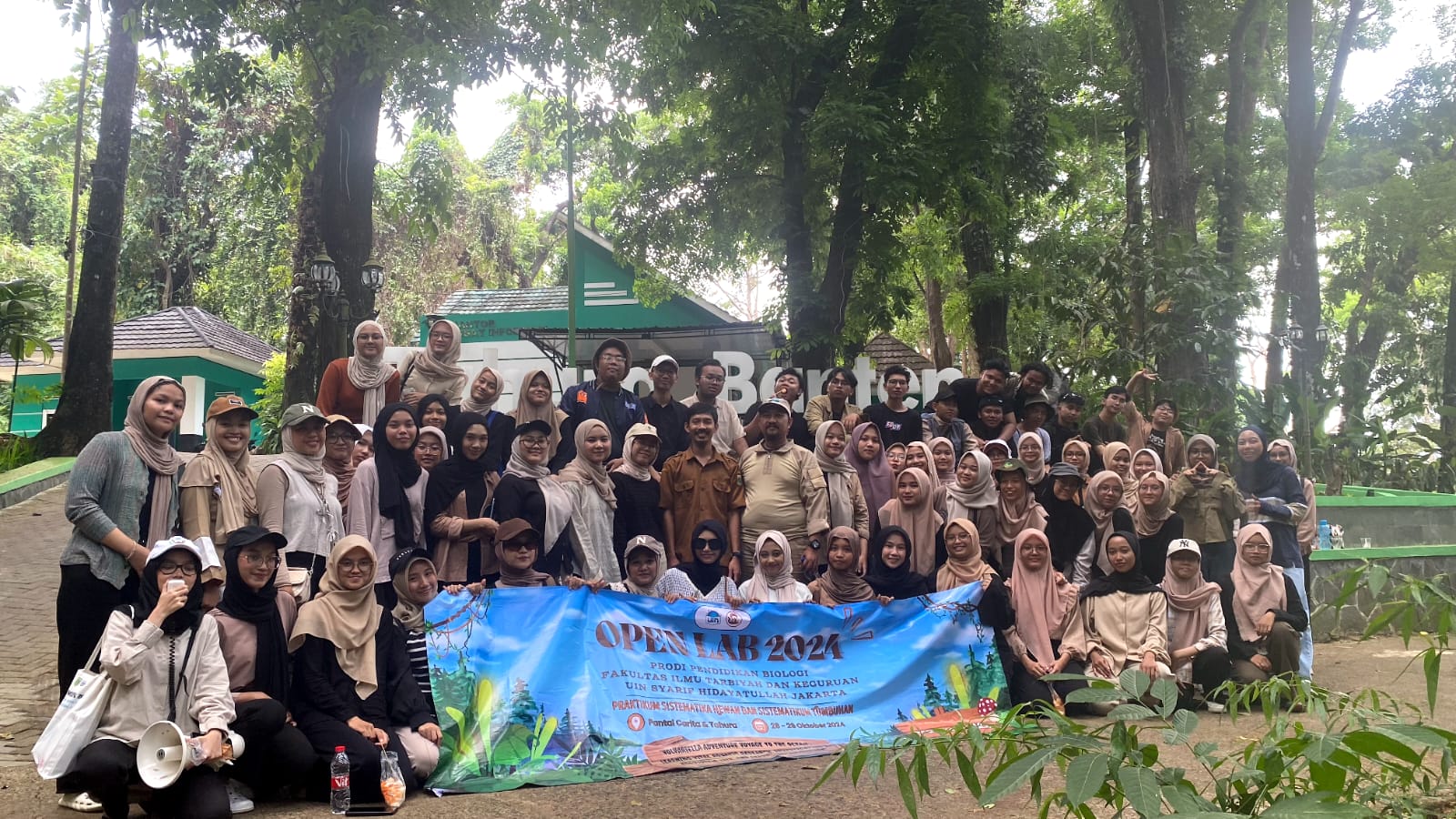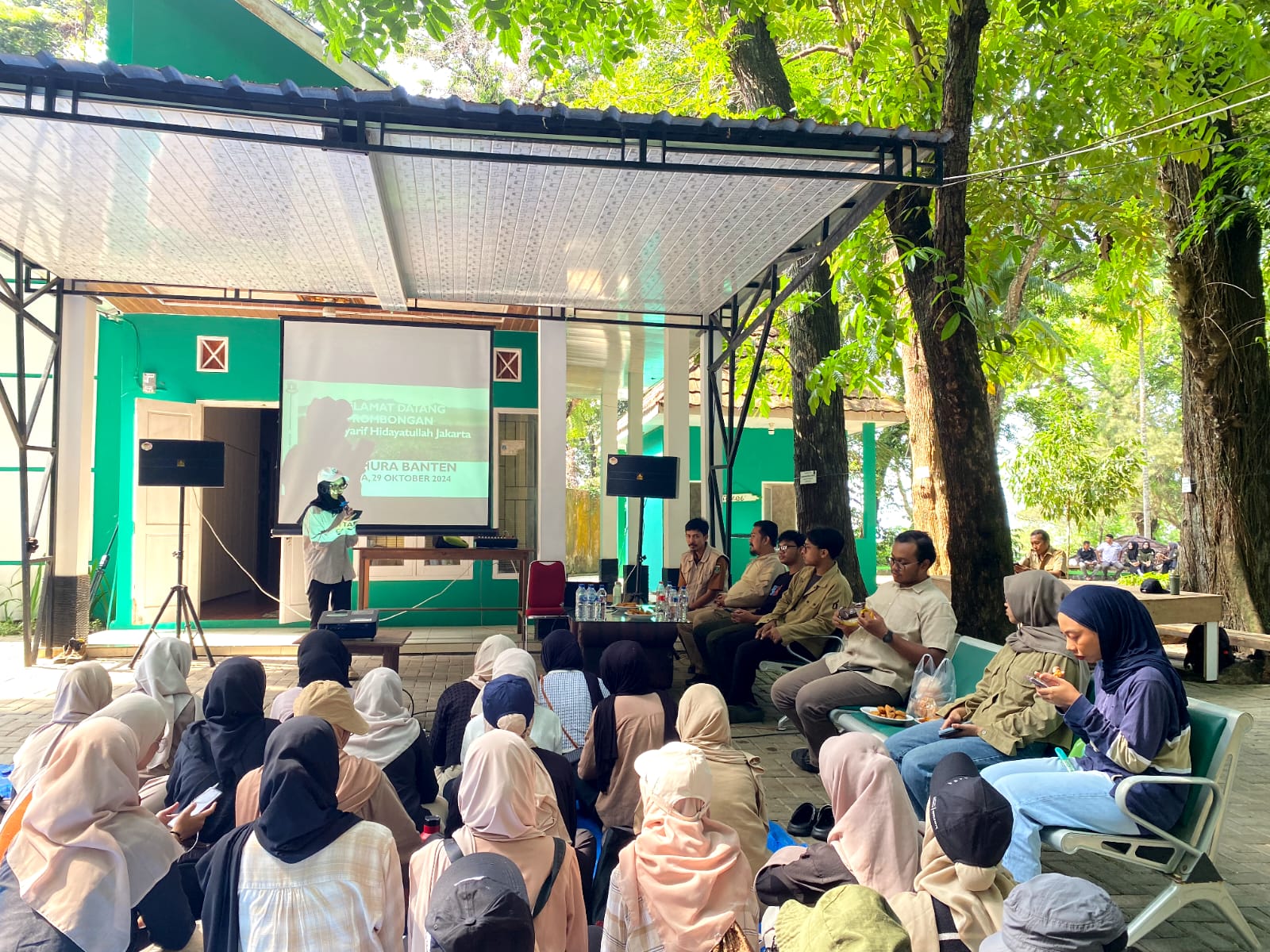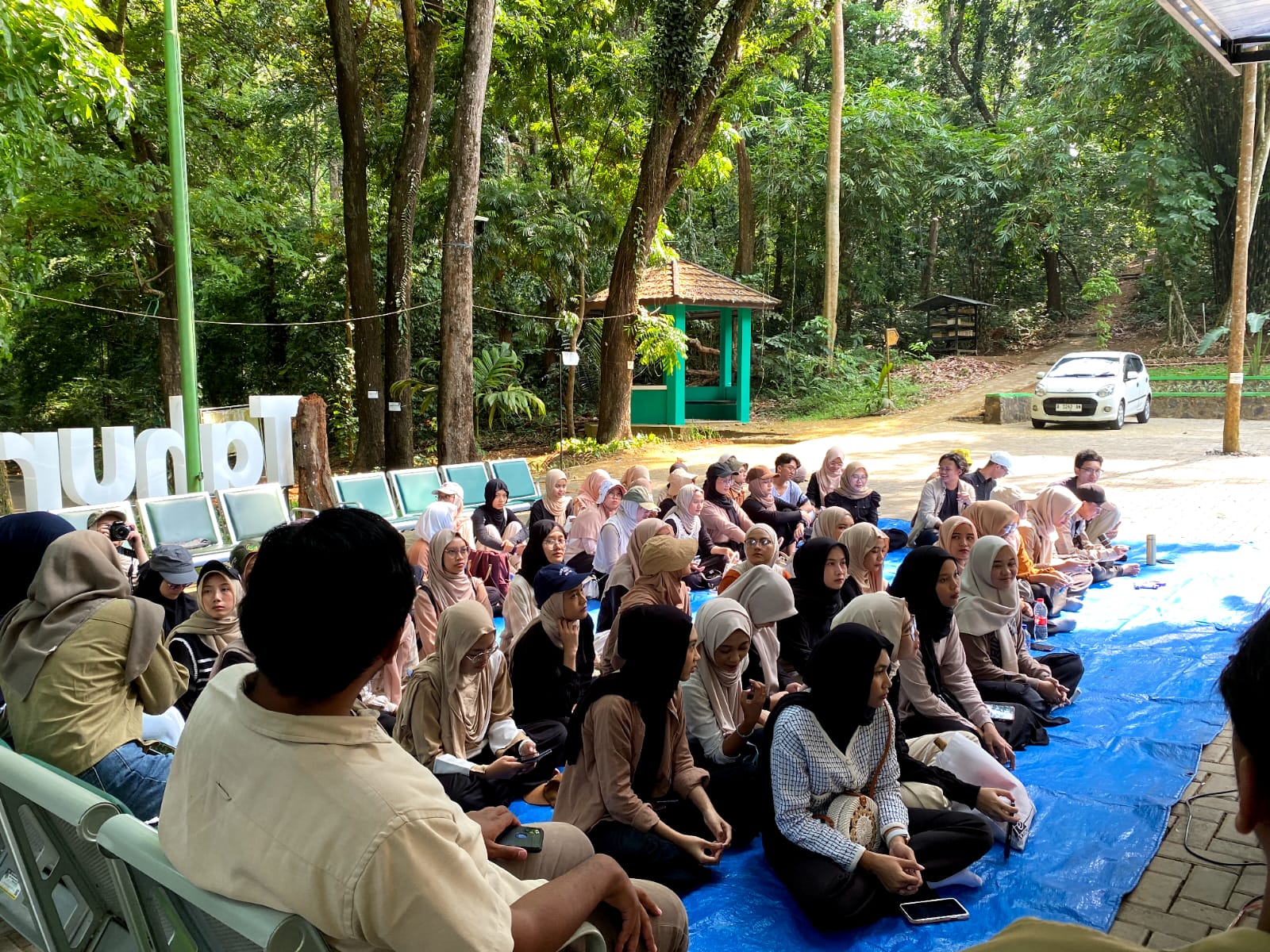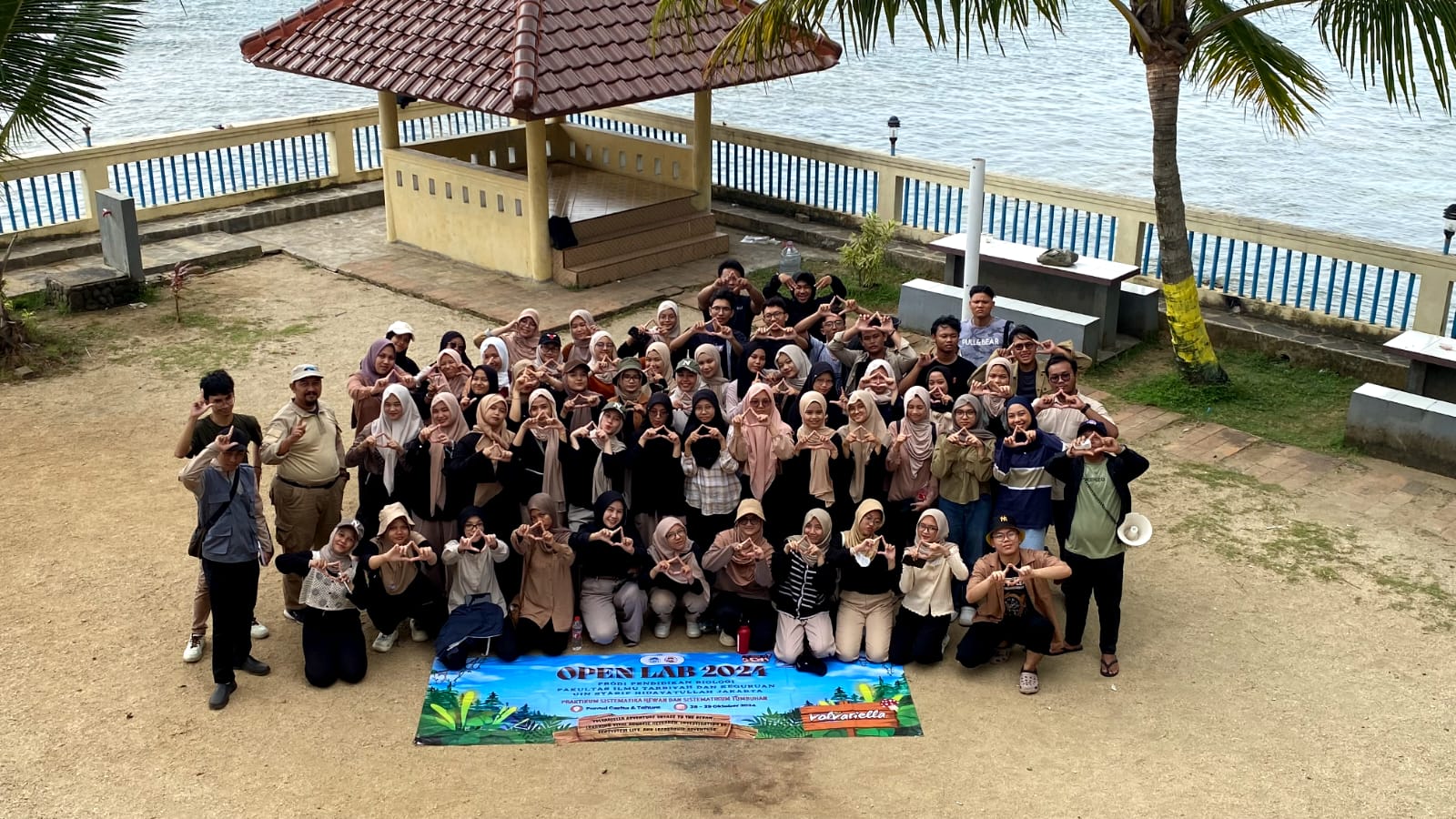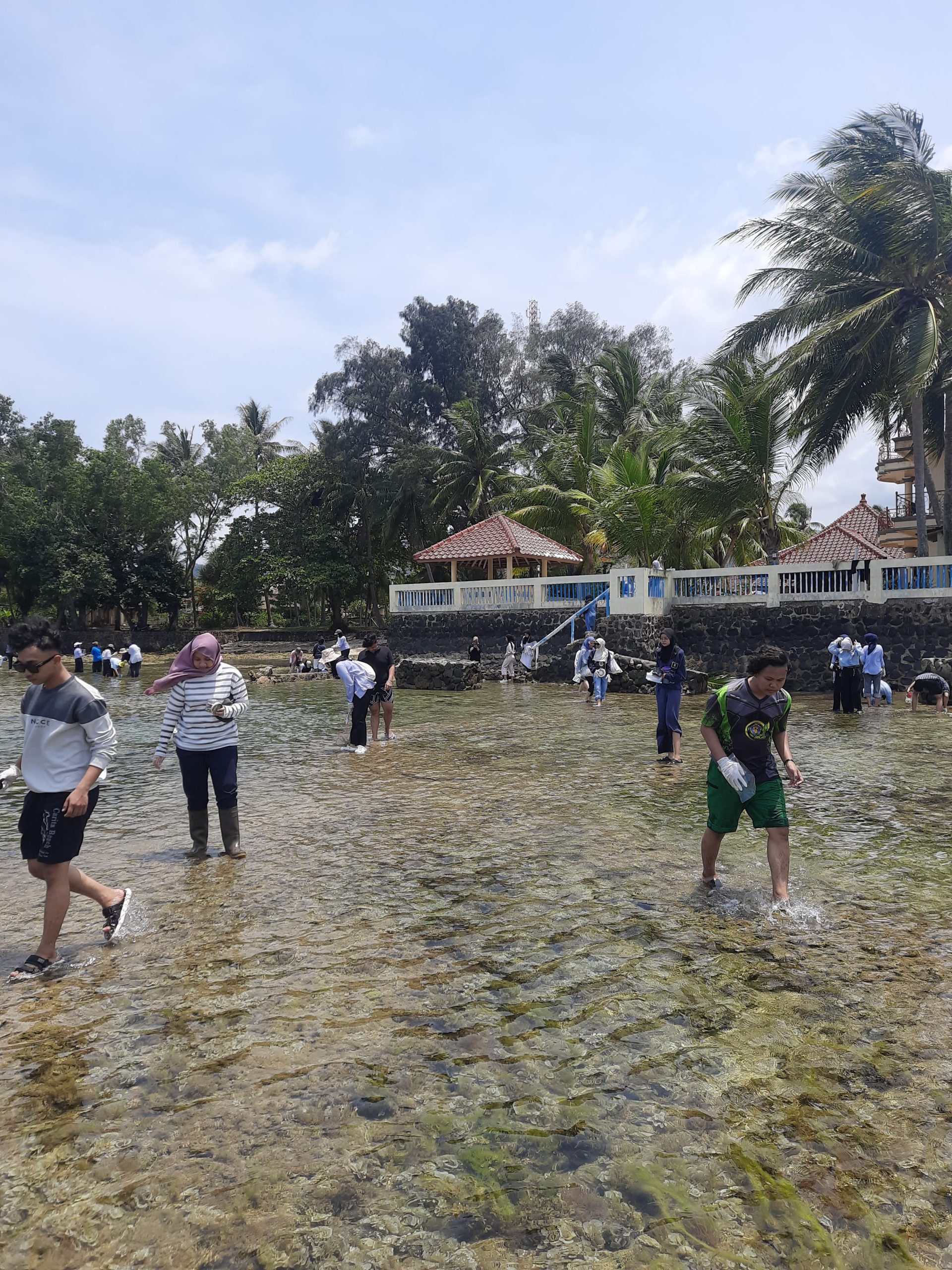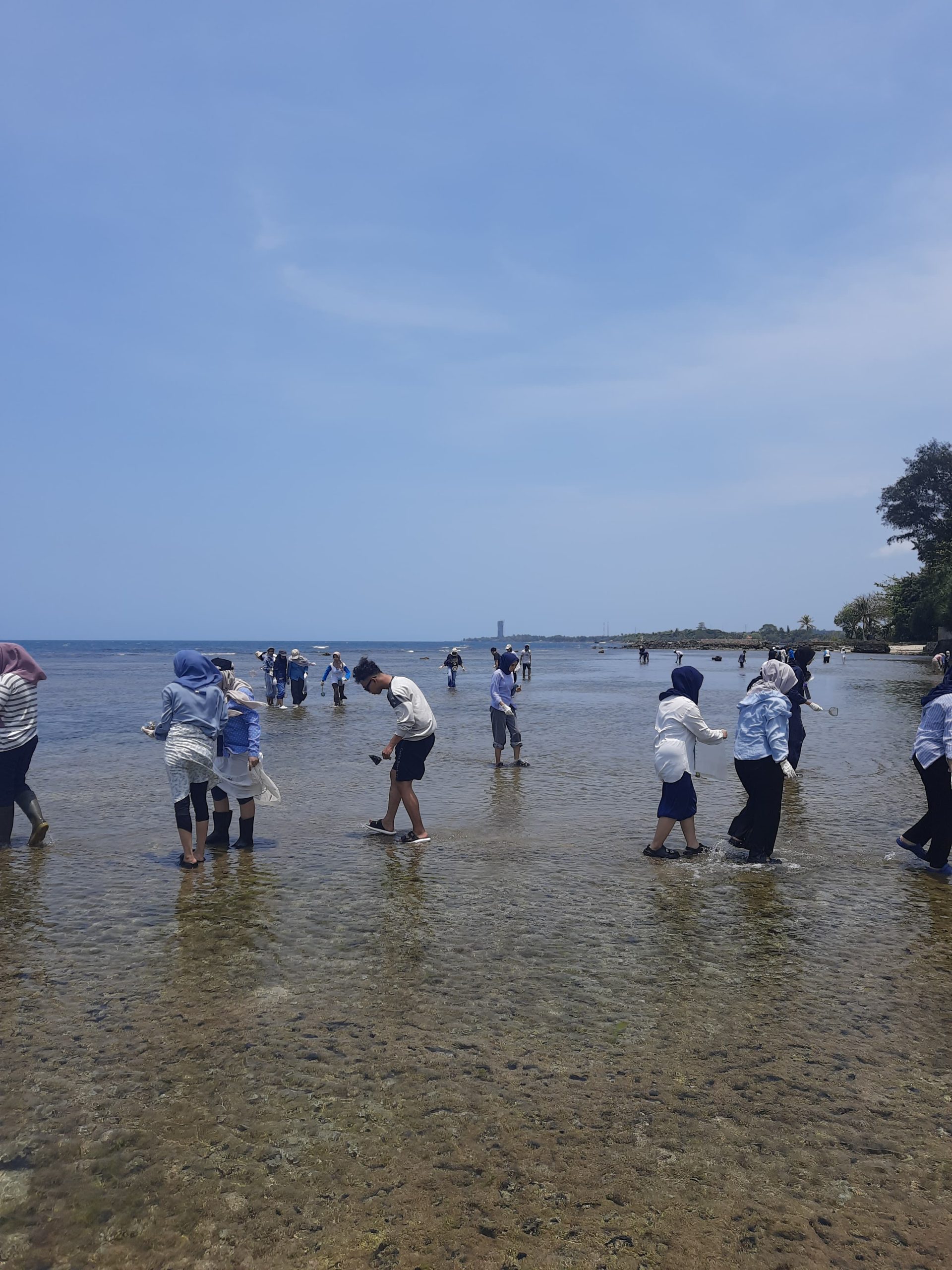This field trip took place on Monday and Tuesday, October 28th and 29th, 2024, at the Banten Forest Park (TAHURA) and Carita Beach, Sukarame Village, Carita District, Pandeglang Regency, Banten Province. The activity was attended by 62 third-semester Biology Education students taking the Basic Ecology and Animal Systematics Practical course, consisting of 11 males and 51 females. In addition, to provide guidance and supervision in the field, students were also accompanied by the course lecturer, laboratory staff, and teaching assistants.
The open lab activity began with a visit to the Banten TAHURA starting at 8:00 AM. The activities included a visit, a presentation on biodiversity and the potential of TAHURA, and vegetation analysis practice in the TAHURA area. The material was presented by the resource person, Mr. Yana Anjana Saputra, S.Hut., an analyst at the UPTD TAHURA Banten Management. TAHURA Banten has an area of approximately 2,471.51 hectares located in Pandeglang Regency and Serang Regency, Banten Province. The type of ecosystem in TAHURA is the type of lowland rainforest ecosystem or lowland dipterocarp forest.
The forest resource potential in the Tahura area has a unique ecosystem and a relatively high level of biodiversity, including various types of flora, both endemic and exotic, and various types of rare and/or protected fauna.
The identified wildlife diversity in the area includes 117 species of lowland forest birds and 11 species of endemic birds in Tahura. The types of mammals found include Lutung, Kijang, Kancil, Wild Boar, Javan Leopard, Skunk, Root Civet, Palm Civet, Garangan, Pangolin, Three-striped Ground Squirrel, Squirrel, Rat, Long-tailed Monkey, Surili, and Porcupine. The identified reptile species include Monitor Lizard, Earth Snake, Python, lizard, and other types. While the identified plant species include Agarwood, Rotan Jemang, Ebony, Manglid, Shorea pinanga, Dipterocarpus sp., Suren, Rasamala, Mahogany, Meranti, Pepper, Nyamplung, and Durian.
After the material presentation by the resource person, it continued with field practicum by conducting vegetation analysis using the quadrat method and species-area curve. The quadrat method was used to analyze the level of plant diversity at the tree, pole, sapling, and seedling vegetation levels. The method used was a 8 x 8 meter plot quadrat. While the species-area curve method was used to analyze the level of diversity of undergrowth plants such as grasses and shrubs at the observation site. The practical activities were carried out by dividing into 3 different locations around the UPTD TAHURA Management building.
Animal exploration activities were carried out at Carita Beach. The collection of invertebrate animals was carried out by the exploration method by observing around the exploration area. The found animals were directly caught and placed in the provided containers. While the animal preservation technique was carried out by soaking in a preservative solution and placed in a clear glass container. The preservation technique used a 70% alcohol preservative solution.
The Open Lab activities in the TAHURA area and Carita Beach provided new experiences and knowledge for all Biology Education students regarding the diversity of plants in TAHURA and invertebrate animals in Carita Beach. The types of plants that were successfully identified include Hihejo, Melinjo, and so on. The plant density was categorized as high and dominated by tree vegetation. In the invertebrate animal exploration activities, 10-16 types of animals were found, coming from 4 different phyla. The phyla of animals found include Porifera, Echinodermata, Mollusca, Arthropoda, and Annelida. Most of these animals were found in coral habitats, while animals such as sea cucumbers were found in sandy bottom habitats.
The field practicum activities carried out are one of the effective and interesting learning methods for students in applying their knowledge to the biodiversity of both animals and plants. Students will be able to directly interact with animals and identify them based on various visible morphological characteristics. This will provide a memorable and interactive learning experience, so that students are more motivated to follow the learning.
Fieldwork Activities for the Basic Ecology and Animal Systematics Course
![UIN Syarif Hidayatullah Logo (KoleksiLogo.com].com) UIN Syarif Hidayatullah Logo (KoleksiLogo.com].com)](https://pbio.fitkuinjkt.id/wp-content/uploads/2024/10/UIN-Syarif-Hidayatullah-Logo-KoleksiLogo.com_.com_.png)
